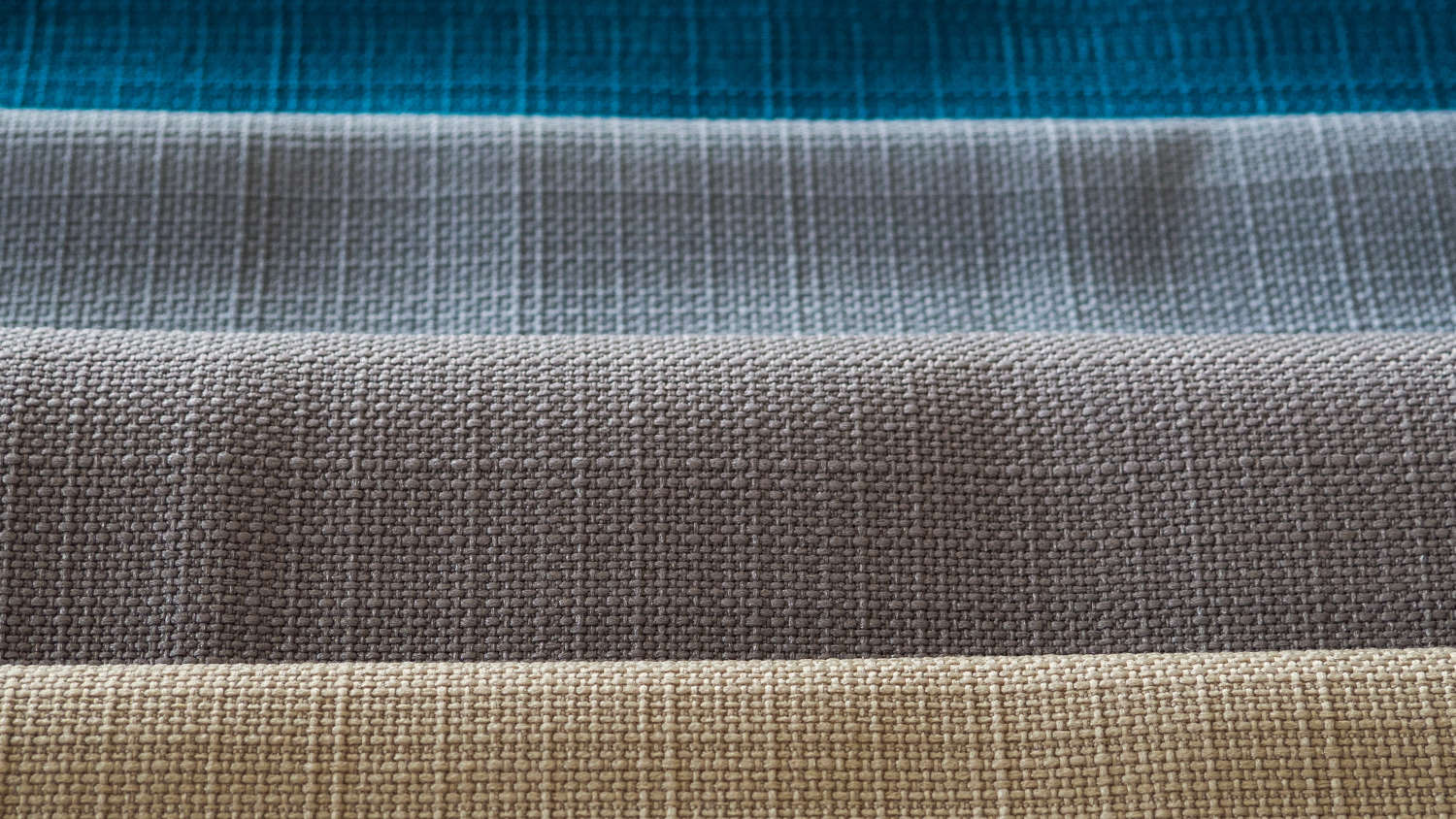Home>Interior Design>Sustainable Fabrics – The Fibers To Look For And Questions To Ask


Interior Design
Sustainable Fabrics – The Fibers To Look For And Questions To Ask
Modified: January 19, 2024
Discover the top sustainable fabrics for interior design. Find out the essential questions to ask when choosing eco-friendly fibers for your projects.
(Many of the links in this article redirect to a specific reviewed product. Your purchase of these products through affiliate links helps to generate commission for Storables.com, at no extra cost. Learn more)
Introduction
Welcome to the world of sustainable interior design! As awareness about the impact of our choices on the environment continues to grow, more and more people are seeking ways to incorporate eco-friendly and sustainable practices into their homes. One area that plays a significant role in sustainable interior design is the choice of fabrics.
The textiles we use in our homes can have a profound impact on the environment. From the production methods to the disposal of materials, every step of the fabric’s lifecycle can contribute to either the degradation or preservation of our planet. By selecting sustainable fabrics, we can reduce our carbon footprint, minimize waste, and support ethical manufacturing practices.
In this article, we will explore the world of sustainable fabrics, including the fibers to look for and the questions to ask. By understanding these concepts, you will be equipped with the knowledge to make conscious choices that align with your values and contribute to a healthier planet.
Key Takeaways:
- Choose sustainable fabrics like organic cotton, linen, and recycled polyester to reduce environmental impact, support ethical practices, and create stylish, eco-friendly interior spaces.
- Ask about fiber content, production processes, and certifications when sourcing sustainable fabrics for interior design. Every choice counts in creating a more sustainable future.
Read more: How To Fix E2 Error In A Washing Machine
Section 1: Sustainable Fabrics
When it comes to sustainable interior design, choosing fabrics that are eco-friendly and ethically produced is crucial. Here are some key factors to consider when selecting sustainable fabrics:
1. Organic Materials: Look for fabrics made from organic materials such as organic cotton, hemp, linen, or bamboo. These materials are grown without the use of harmful pesticides and chemicals, making them a healthier option for both you and the environment.
2. Recycled Fabrics: Opt for fabrics that are made from recycled materials. These can include upcycled fabrics, which are made from pre-existing textiles, or fabrics made from recycled plastic bottles or other post-consumer waste. These fabrics help to divert waste from landfills and reduce the demand for virgin materials.
3. Low-Impact Dyes: Pay attention to the dyes used in the fabric production process. Look for fabrics that use low-impact or natural dyes, which have a minimal environmental impact compared to traditional synthetic dyes. These dyes are made from plant extracts and are biodegradable, reducing the pollution caused by the textile industry.
4. Fair Trade and Ethical Manufacturing: Consider fabrics that are produced under fair trade or ethical manufacturing practices. These ensure that the workers involved in the production process are treated fairly, working in safe conditions and receiving fair wages. By supporting these fabrics, you contribute to a more equitable and sustainable fashion industry.
5. Durability: Choose fabrics that are durable and long-lasting. By investing in high-quality materials, you can reduce the need for frequent replacements, thereby minimizing waste. Look for fabrics with a high thread count and strong fibers that can withstand wear and tear.
6. Biodegradable and Natural Fibers: Give preference to fabrics that are biodegradable and made from natural fibers. When these fabrics reach the end of their life cycle, they can naturally decompose without releasing harmful substances into the environment.
By considering these factors, you can make informed choices when selecting sustainable fabrics for your interior design projects. These fabrics not only contribute to a healthier planet but also create a more eco-conscious and stylish living space.
Section 2: Fibers to Look For
When choosing sustainable fabrics, it’s important to be aware of the different fibers that are considered eco-friendly and have a minimal environmental impact. Here are some fibers to look for:
1. Organic Cotton: Organic cotton is grown without the use of synthetic fertilizers or pesticides. It is a versatile and widely available fabric, commonly used in bedding, towels, and upholstery. Choosing organic cotton helps to protect the soil, conserve water, and support the well-being of farmers.
2. Linen: Linen is made from the flax plant and is known for its durability and breathability. It requires minimal water and energy during production and is biodegradable. Linen is often used in curtains, upholstery, and bedding due to its natural texture and luxurious feel.
3. Hemp: Hemp is a strong and sustainable fiber that requires minimal water and pesticides to grow. It has a wide range of applications in interior design, including upholstery, rugs, and curtains. Hemp is also known for its antimicrobial and hypoallergenic properties.
4. Bamboo: Bamboo is a rapidly renewable resource that can be harvested without causing damage to the plant. It grows quickly and requires minimal water, making it an eco-friendly choice. Bamboo fabrics are soft, breathable, and moisture-wicking, making them ideal for bedding, curtains, and upholstery.
5. Tencel®: Tencel® is a brand name for lyocell, a fiber made from sustainably sourced wood pulp. The production process uses a closed-loop system where solvents are recycled, minimizing waste. Tencel® fabrics are soft, moisture-absorbent, and biodegradable, making them suitable for various interior applications.
6. Recycled Polyester: Recycled polyester is made from post-consumer plastic bottles and other recycled materials. It helps reduce plastic waste and the need for virgin polyester production. Recycled polyester fabrics are versatile and can be used in upholstery, cushions, and curtains.
These are just a few examples of sustainable fibers to look for when choosing fabrics for your interior design projects. By opting for these eco-friendly fibers, you can make a positive impact on the environment without compromising on style or quality.
When looking for sustainable fabrics, look for fibers such as organic cotton, hemp, linen, Tencel, and recycled polyester. Ask about the fabric’s environmental impact, certifications, and end-of-life options.
Section 3: Questions to Ask
When sourcing sustainable fabrics for your interior design projects, it’s important to ask the right questions to ensure that the fabrics meet your standards for sustainability. Here are some key questions to ask:
1. What Is the Fabric Made From? Inquire about the fiber content of the fabric. Look for natural and organic materials such as organic cotton, linen, hemp, or bamboo. Avoid fabrics made from synthetic fibers such as polyester and acrylic, as these are derived from non-renewable resources.
2. What Is the Production Process? Ask about the manufacturing process of the fabric. Look for fabrics that use sustainable and low-impact production methods, such as water-saving techniques or closed-loop systems. Avoid fabrics that involve the use of toxic chemicals or contribute to air and water pollution.
3. Are the Dyes and Finishes Eco-Friendly? Inquire about the dyes and finishes used in the fabric. Look for fabrics that use low-impact or natural dyes, which are free from harmful chemicals and have a reduced environmental impact. Also, ask if any finishes, such as stain-resistant or flame-retardant coatings, are applied and whether they are eco-friendly.
4. Is the Fabric Certified? Look for certifications such as Global Organic Textile Standard (GOTS), OEKO-TEX Standard 100, or Forest Stewardship Council (FSC) certification. These certifications ensure that the fabrics meet specific environmental and social criteria, giving you confidence in their sustainability claims.
5. What Is the Fabric’s Lifespan and Care? Ask about the durability and care requirements of the fabric. Choose fabrics that are long-lasting and can withstand regular use and washing without losing their quality. Additionally, opt for fabrics that are easy to clean and maintain, avoiding harsh cleaning chemicals that may be harmful to the environment.
6. How Does the Fabric Support Ethical Practices? Inquire about the ethical considerations of the fabric production. Look for fabrics that support fair trade practices, ensuring that the workers involved in the manufacturing process are treated fairly and paid a living wage.
By asking these questions, you can gather important information about the fabrics you are considering and make more informed choices for sustainable interior design. Remember that every decision counts, and by choosing fabrics that align with your values, you can contribute to a more sustainable future.
Conclusion
Sustainable interior design is not just about creating beautiful spaces but also about making conscious choices that prioritize the well-being of our planet. When it comes to fabric selection, opting for sustainable options can have a significant impact on reducing our environmental footprint and supporting ethical practices.
In this article, we explored the world of sustainable fabrics and discussed the importance of considering factors such as organic materials, recycled fabrics, low-impact dyes, fair trade practices, and durability. We also highlighted fibers to look for, including organic cotton, linen, hemp, bamboo, Tencel®, and recycled polyester.
Moreover, we emphasized the importance of asking the right questions when sourcing sustainable fabrics. These questions involve understanding the fabric’s composition, production process, use of eco-friendly dyes, certifications, durability, and support for ethical practices.
By incorporating sustainable fabrics into our interior design projects, we contribute to a healthier planet, support ethical manufacturing, minimize waste, and create spaces that are not only aesthetically pleasing but also environmentally conscious.
Remember, every small choice we make has the potential to make a big difference. So as you embark on your next interior design project, take the time to research and select fabrics that align with your values and contribute to a more sustainable future.
Let’s work together to create beautiful and eco-friendly spaces that inspire and promote a greener world!
Frequently Asked Questions about Sustainable Fabrics – The Fibers To Look For And Questions To Ask
Was this page helpful?
At Storables.com, we guarantee accurate and reliable information. Our content, validated by Expert Board Contributors, is crafted following stringent Editorial Policies. We're committed to providing you with well-researched, expert-backed insights for all your informational needs.











0 thoughts on “Sustainable Fabrics – The Fibers To Look For And Questions To Ask”